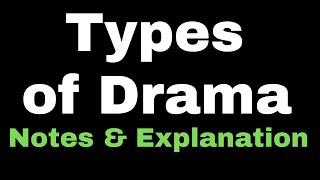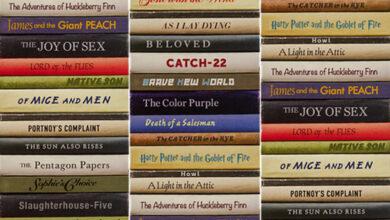
4 types of drama in literature with examples and explained
Drama can be divided into four main categories: comedy, tragedy, tragicomedy, and melodrama. Each type of drama in literature has its own traits despite having diverse historical origins. But each of them has a place in contemporary society and deserves respect.
In English literature, what is drama? Drama is the performance of written language to depict real-world or imagined occurrences.Information Guide Nigeria
👉 Relocate to Canada Today!
Live, Study and Work in Canada. No Payment is Required! Hurry Now click here to Apply >> Immigrate to CanadaDrama can be defined as simply stories brought to life on stage by performers and other events.
Aristotle defined drama as poetic writing performed in front of spectators in a theatre.
The audience can experience a sense of involvement in the action through the use of performance, music, dance, props, and other elements. This is what distinguishes the drama genre as a distinct literary one.
Of course, you can also read drama as a play that has been written. However, unless it is executed, you won’t really understand what the author was trying to convey. Drama can also be heard on the radio or in movies.
Types of drama in literature
Understanding drama’s various forms are essential to comprehend what it is in literature. There are many different kinds of drama, but only the four primary kinds will be discussed below.
They are melodrama, comedy, tragedy, and tragicomedy. These include various dramatic elements such as plot, characters, music, dialogue, etc.
The majority of plays also incorporate components from some, all, or none of these genres.
1. Comedy
The drama that seeks to make the audience laugh is referred to as comedy. It has a pleasant tone and, for the most part, a cheerful ending. Humor first appeared as a kind of play in the Ancient Greek theater, where the concept of comedy first took shape.
👉 Relocate to Canada Today!
Live, Study and Work in Canada. No Payment is Required! Hurry Now click here to Apply >> Immigrate to CanadaThere are other subcategories of comedy, including lampoon, farce, satire, dark comedy, etc.15 Best Animation Software for Marketing Video Online for Free
Every comedy has a specific target audience. It’s interesting to note that these choices may also be influenced by a person’s cultural upbringing.
2. Tragedy
Tragic dramas have a protagonist or hero who is brought low by personal failings.
Among the most prevalent themes in tragedies are murders, demises, madness, and suffering. Typically, weak points or flaws in the main characters lead to their demise.
Tragic performances initially emerged in Greek theater. Similar to comedy, it endured the Roman Empire, the Middle Ages, the Renaissance, and later periods.
According to Aristotle, the purpose of tragedy is to elicit specific feelings from the audience, like as sorrow and dread, so that they leave the theater with an understanding of how both gods and humans operate.
By seeing certain tragic and moving changes in the protagonist’s circumstances, the spectator experiences catharsis.
3. Tragicomedy
A unique genre of drama known as “tragicomedy” combines the traits of tragedy with comedy. This indicates that such a play might be depressing yet have a joyful conclusion, or it might be serious with some humor appearing throughout the entire play.
Tragicomedy, as opposed to comedy and tragedy, developed a little later, under the Roman Empire. The first tragicomedy was written by Roman playwright Plautus, who also coined the term.7 Best Weight Dumbbells in Nigeria and their prices
He exploited comedy’s lightheartedness but chose gods and monarchs as the major protagonists in his play Amphitryon. He did something truly revolutionary here.
There were rigid guidelines for writing drama before Plautus; it was either comedy or tragedy. Never were these genres combined.
Plautus was the first to observe that both tragedy and comedy had elements in everyday life.
4. Melodrama
The fourth and last type of drama is melodrama. It is a particular style of drama when everything is exaggerated. Melodramatic themes are typically straightforward and devoid of unexpected plot turns. In these dramas, there are a lot of stereotypes.
However, the primary goal of a melodrama is to evoke strong emotions in the audience rather than to communicate a tale. Melodramas typically feature lovely heroines, endearing protagonists, and menacing antagonists in their love stories.
Comedy, tragedy, and tragicomedy all have their beginnings much earlier than melodrama. At the end of the 18th century, France was where it originally debuted.
Later, it spread to Britain, where it rose to prominence as one of the 19th century’s most common forms of play.
Melodrama was the most well-liked and widely-attended kind of theatrical entertainment during the 19th century, in particular.
This is because theaters started to be accessible to the general public during that era. Melodrama gained enormous popularity among artisans and members of the working class since it was targeted specifically at their social stratum.NYSC Portal
Melodrama had such a profound impact on society that it permeated other genres of literature and entertainment and endured to the present day.
What are the elements of drama?
Knowing that there are various kinds of drama, one might infer that a play intended for performance must contain a number of certain components in order to be considered a drama.
The concept, plot, character, conversation, locations, performance, music, and visual effects are among the main components of drama.105 Good Morning My Love Messages
Here are the main dramatic components and what they do in a play.
1. Theme
The main idea of a play is referred to as its theme. You can either assume it after seeing the full performance or it can be communicated explicitly through language or action.
The philosophical underpinning of the story or a moral lesson that the characters are taught makes up the theme. The play is about a theme, to put it simply.
The play’s message or lesson is what the authors hope the audience will take away from it.
For instance, the theme of a play can be how unforgiveness ruins relationships or how love unites individuals from different backgrounds or races.
2. Plot
A plot is the progression of events in a play, to put it simply. The story that the play tells is essentially its plot. It is the order in which the story’s events occur.
The primary theme or climax is usually introduced after the conflict point has been established and the main character’s past or background has been revealed.
A story typically starts by revealing the past or background of the main character and secondary characters, as well as the point of conflict, before moving on to reveal the major theme or climax.200 Romantic Love Message For Her
The drama concludes with a climax after which it reaches its resolution.
3. Characters
The parts that actors play in a play are called characters. The protagonist and the antagonist are any play’s major characters. Characters in a literary work might be people, animals, or other figures.
Character development determines whether a character is dynamic, static, round, or flat.
4. Dialogue
Simply put, dialogues are the lines that players deliver in a play. Through the characters’ interactions, the story is told to the audience.
The audience’s reaction to the play is greatly influenced by the dialogue’s content and the delivery of those lines. The communication between characters is how the reader may comprehend the story.
Dialogues also aid in character development and help the audience better comprehend the characters.
In a drama, monologues, and soliloquies are just as significant as dialogue. They are monologues spoken by players to themselves or the audience during a performance.
5. Setting
One of a story’s key components is the time and place where it takes place. the historical era in which the play’s incidents occur. The location and era of a play are depicted, among other things, through stage design and clothing.
6. Performance
This article discusses how characters created on paper come to life through actors. The success of the play depends on how successfully the actors capture the qualities of their roles.
7. Music
The use of sounds and rhythm in talks is a part of this element. Additionally, it covers musical compositions used in plays.JAMB Portal
The sound effects, music, and background score are employed to enhance the situations and characters in the film. Additionally, music aids in conveying to the viewer the feelings present in a scene.
8. Visual element
The spectacle, or visual component of drama, lends the stage design a pleasing aesthetic. Characters’ attire and cosmetics also fall under the category of visual components.
Scenes can become sufficiently exciting with the use of visual components.
Aside from the key components mentioned above, other crucial components for any successful play include the story’s framework, the use of symbolism and contrast, and general stagecraft.
Despite the fact that there are numerous varieties of drama, most plays include several of these varieties.
Check JAMB RESULT
Check and Confirm: How much is Dollar to Naira








